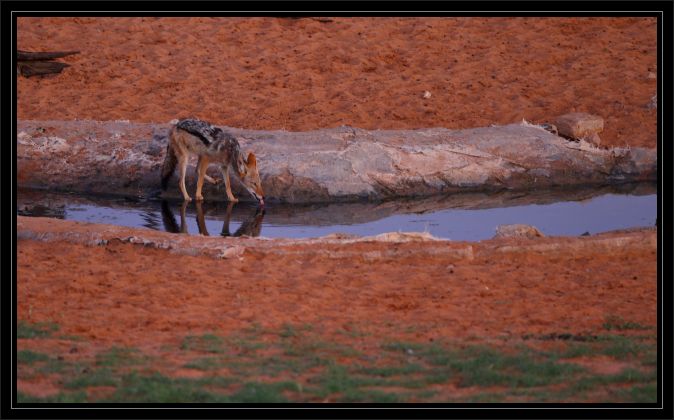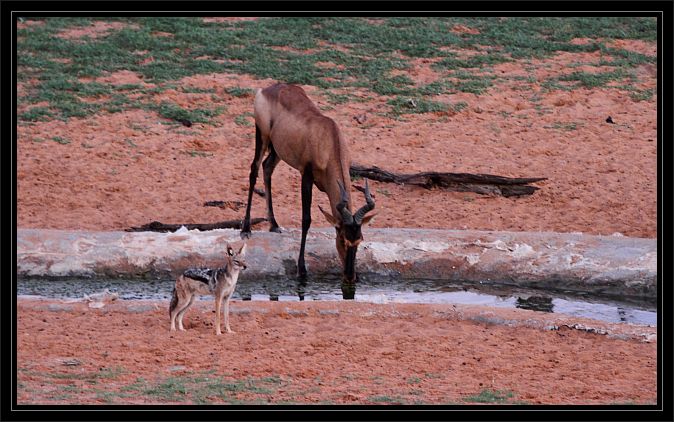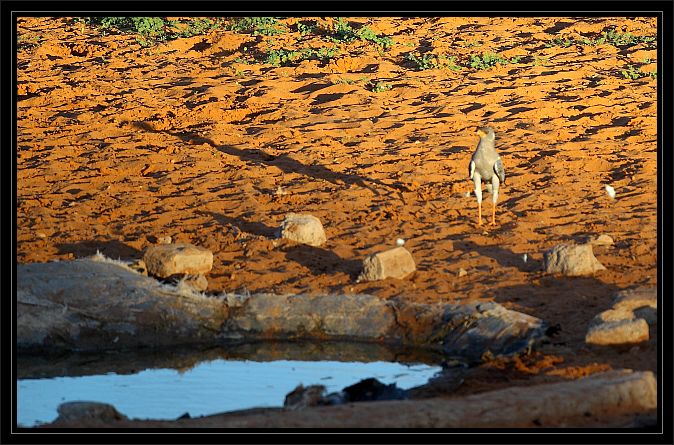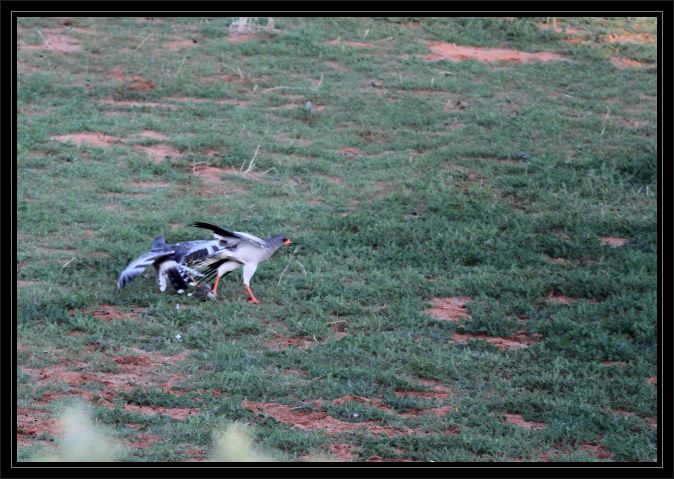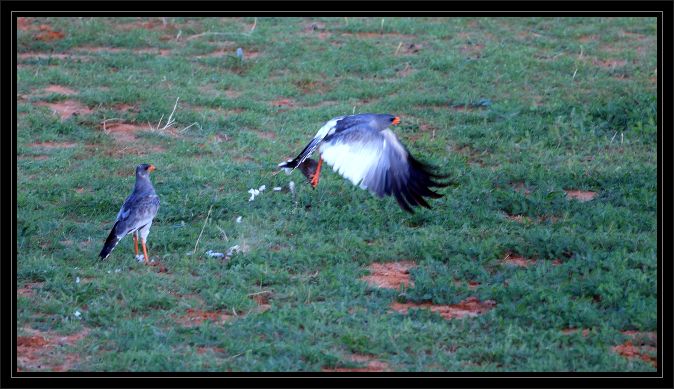Page 2 of 5
Re: Flavour of the Month - July 2014 - Gharagab and Surround
Posted: Fri Jul 18, 2014 3:46 pm
by Mel
I'll stick with scenery photos for one more post...
From the look out tower:
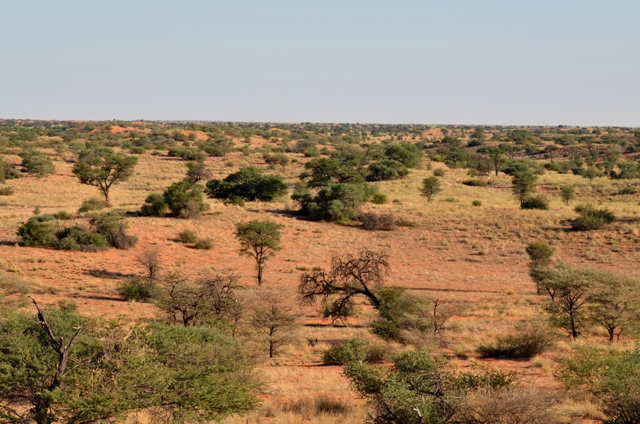
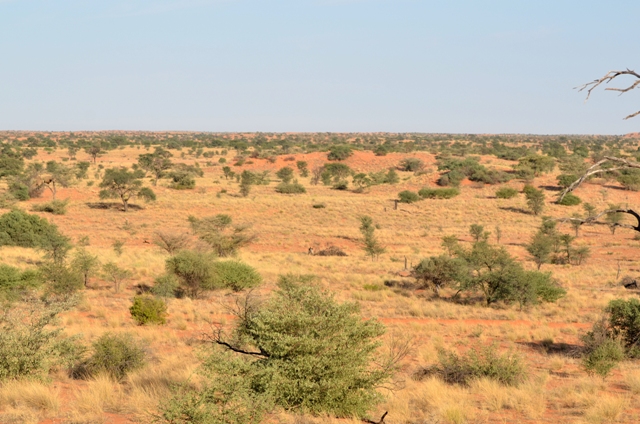
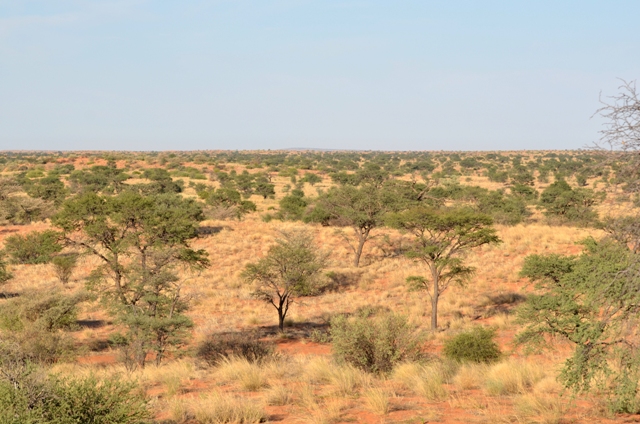
Look out tower to unit 2 where we were staying at:
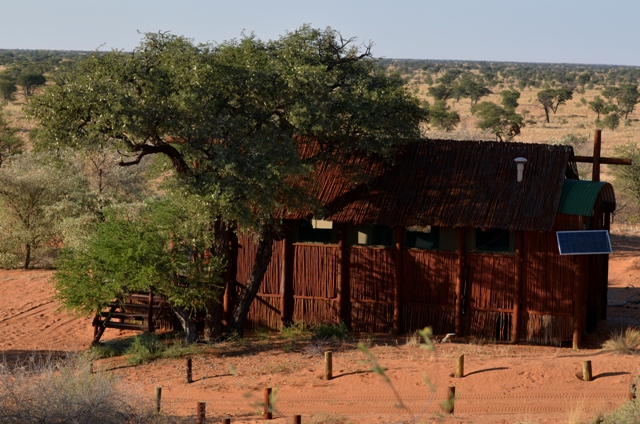
Unit 2 to waterhole:
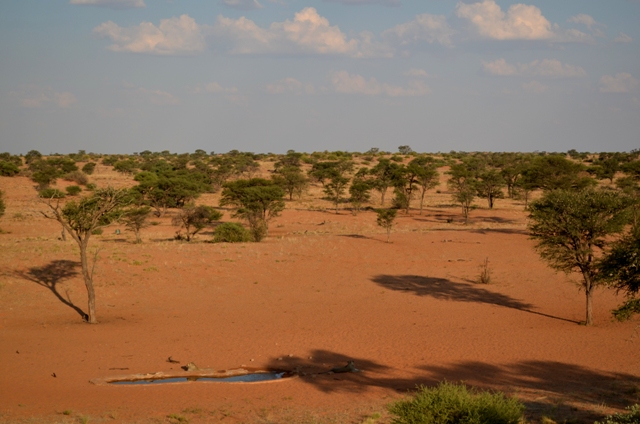
All in March 2013.
Re: Flavour of the Month - July 2014 - Gharagab and Surround
Posted: Sun Jul 20, 2014 10:37 am
by Mel
Sorry, Gump...

We got to experience two very different sunrises:
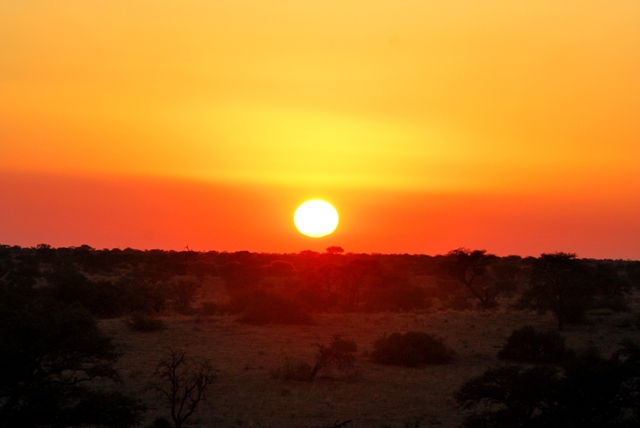
22/03/2013
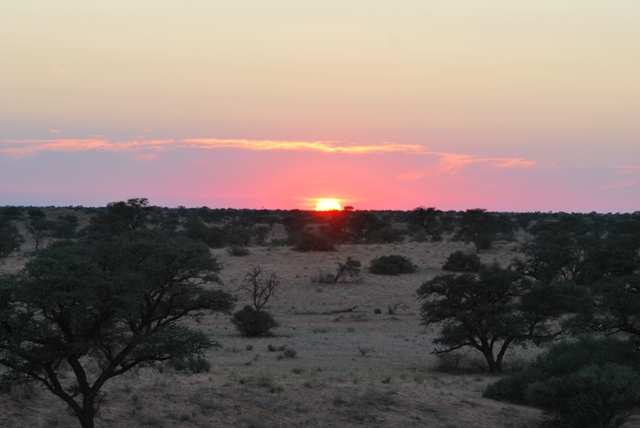
23/03/2013
Re: Flavour of the Month - July 2014 - Gharagab and Surround
Posted: Mon Jul 21, 2014 10:38 am
by Sharifa
Re: Flavour of the Month - July 2014 - Gharagab and Surround
Posted: Wed Jul 23, 2014 12:56 pm
by Sharifa
Re: Flavour of the Month - July 2014 - Gharagab and Surround
Posted: Wed Jul 23, 2014 9:29 pm
by Mel
At Gharagab Dam - which was dry in March 2013...
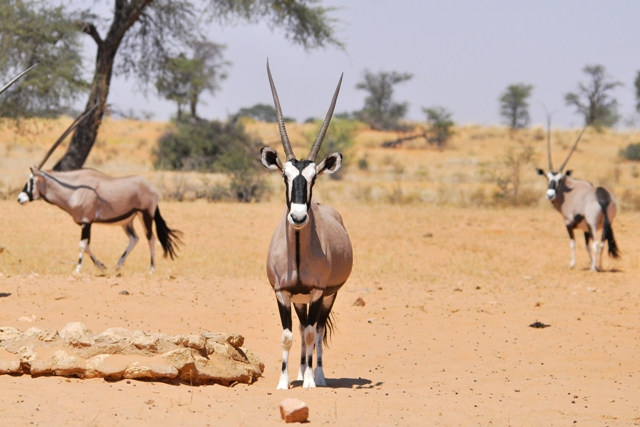
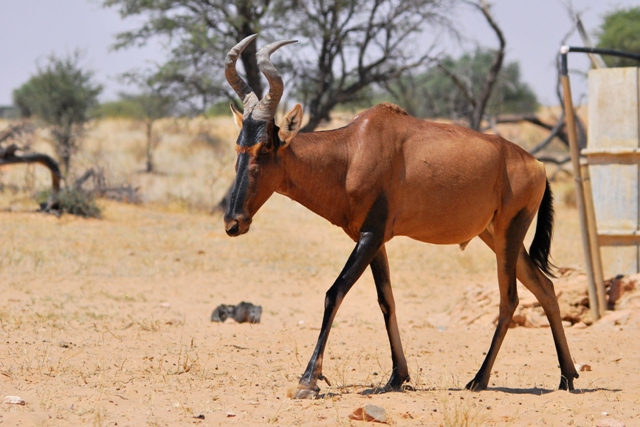
Re: Flavour of the Month - July 2014 - Gharagab and Surround
Posted: Fri Jul 25, 2014 1:19 pm
by Sharifa
Fltterby, nan, Mel, mposthumus
 The best known research project carried out in the Kalahari Gemsbok has been the University of Pretoria's study of the Kalahari lion- not a different species from the lion of Kruger Park and elsewhere, but certainly adapted to very different conditions.
The best known research project carried out in the Kalahari Gemsbok has been the University of Pretoria's study of the Kalahari lion- not a different species from the lion of Kruger Park and elsewhere, but certainly adapted to very different conditions.
The researchers found that the Kalahari lion may be expected to kill 47 animals a year- more than three times as many as its counterpart in the Kruger Park- even though the prey is scarcer in the Kalahari, and the terrain makes it more difficult to catch.
As the researchers discovered, the disparity is a matter of scale. As much as 50% of the Kalahari lion's kill is made up of small mammals, whereas in the Kruger Park the proportion is only 1%. Given the opportunity, a Kalahari lion prefers to dine on ambitious fare such as gemsbok, blue wildebeest or red hartebeest. Sometimes, however, it is reduced to eating springhares, bat-eared foxes and porcupines merely to stay alive (porcupines represent one-quarter of their prey.)
Reference: Reader's Digest Illustrated Guide to Game Parks & Nature Reserves of Southern Africa.
At Dankbaar we found this male
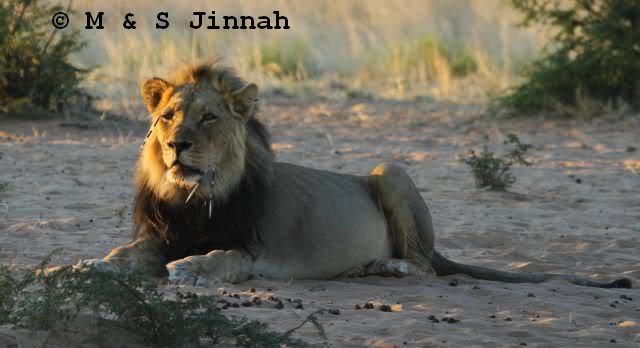
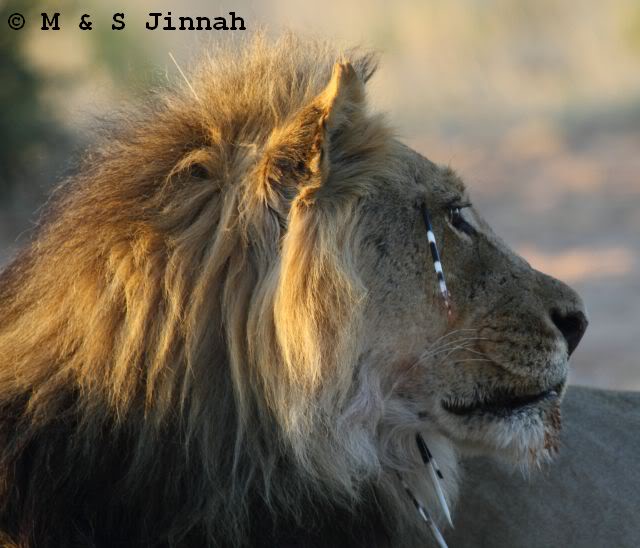

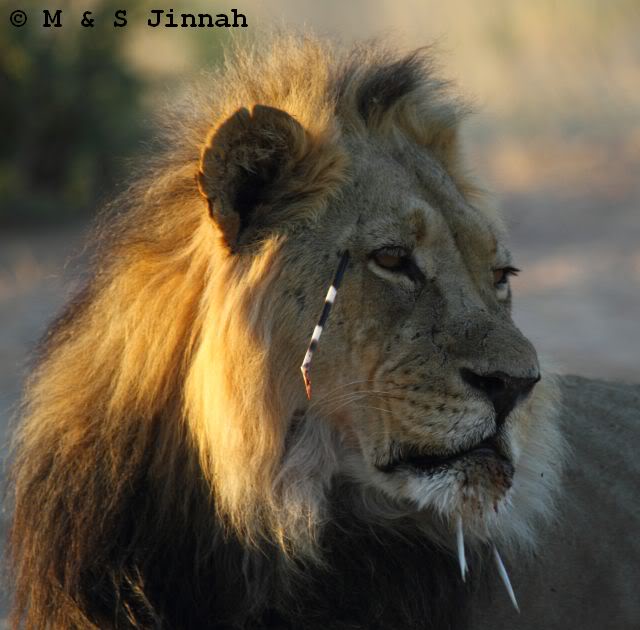

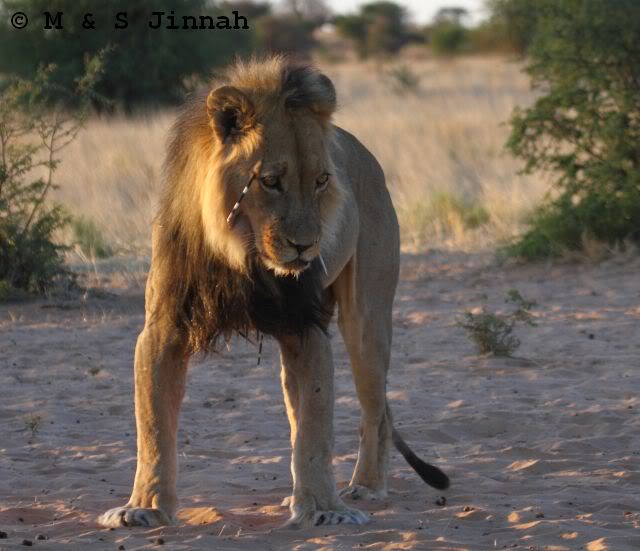

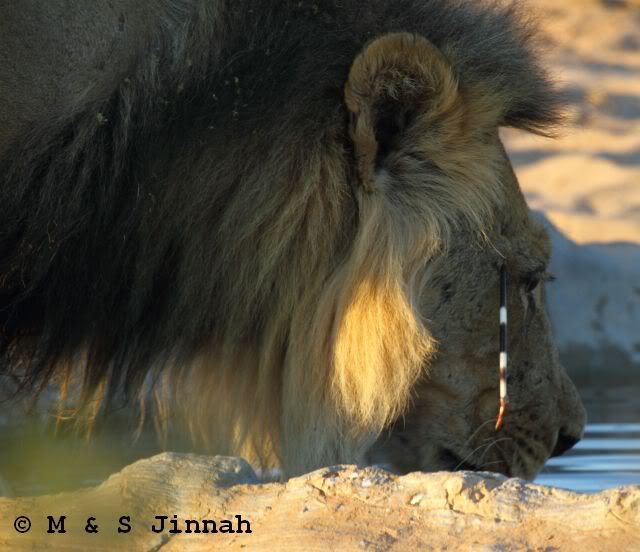
and this guy waiting patiently licking his lips

Re: Flavour of the Month - July 2014 - Gharagab and Surround
Posted: Fri Jul 25, 2014 4:09 pm
by Duke
The quills are barbed so do not fall off and wounds do become septic.
This guy seemed unaffected with the quill lodged in his cheek

Re: Flavour of the Month - July 2014 - Gharagab and Surround
Posted: Fri Jul 25, 2014 5:29 pm
by Mel
I'm amazed that that guy would take to killing porcupines. He looks well fed and
seems to be part of a supporting pride. So why the need to feed on porcupines...
Very interesting read, Sharifa. Had seen something similar somewhere else and
remember that I thought "And the Kalahari lions still look healthier than their
Kruger counterparts" despite their diet being half made up of small critters.
Re: Flavour of the Month - July 2014 - Gharagab and Surround
Posted: Fri Jul 25, 2014 9:05 pm
by Duke
Flutterby wrote:Would have thought that the Kalahari lions would have smaller manes to adapt to the heat.

except that it gets to minus 12 in Winter Brrrrrr

Re: Flavour of the Month - July 2014 - Gharagab and Surround
Posted: Mon Jul 28, 2014 9:53 pm
by Tina
we have not seen that much but here are some of our pictures.
the road
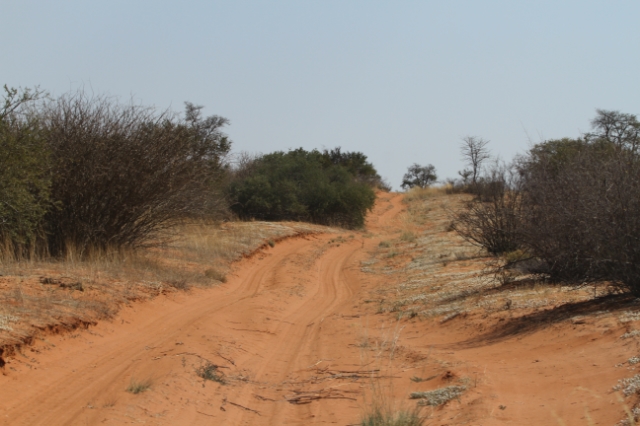










 22/03/2013
22/03/2013 23/03/2013
23/03/2013
